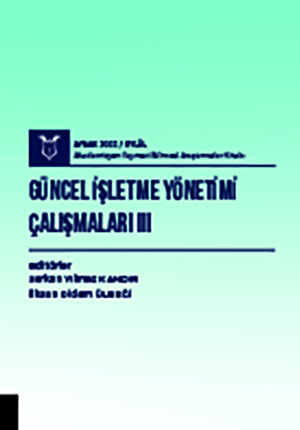Kadın Müzik Üreticiliğinde Beste Yapma Süreçlerinin Tasarımı Ve İzledikleri Stratejiler
Anahtar Kelimeler
Throughout history, women have developed various strategies driven
by the instinct to protect themselves. Holding on to work and home life and
overcoming challenging processes has always been the work of women. The number
of female musicians is increasing every day worldwide, yet the number of female
composers remains much lower compared to musicians. Particularly in the 19th
century, it can be seen as a strategy born out of the difficulties they faced
that female composers used male names to perform and publicize their works,
camouflaging themselves. This section aims to examine and determine how female
composers design their music production processes, what kind of strategies they
apply to process management and crisis management. The research involved
semi-structured interviews with two female composers working in government
institutions and two independent female composers. Purposeful sampling method was used to determine the sample group.
In the qualitative research conducted, case study patterns were examined, and
data were obtained through interviews about how female composers design their
work production processes, how they manage the process, and the strategies they
follow. Content analysis was conducted in line with the obtained data. When
examining the research, it is emphasized that gender inequalities should be
addressed in general. It points out the need to include the works of female
composers in music education and performance and highlights the difficulties
faced by women in the music industry while pursuing their careers as composers.
The music industry can work to recognize and encourage the contributions of female
composers, aiming for a more inclusive and diverse representation of musical
creativity. In the 19th century, it is possible to say that the strategies
produced by female composers, such as hiding their names, creating pseudonyms
using male names, were transition strategies - camouflaging and adapting within
society. It is thought that today’s female composers do not need to resort to
such strategies due to feminist theory, women’s rights and agreements, and
legal regulations. In the context of limited career progression, many female
composers have spoken of feeling marginalized due to men’s prejudices,
discredited, and often placed second in preference order. From this
perspective, it is believed that the career advancement of women who stand
strong and do not give up on producing works cannot be halted. It can be concluded that female composers preserve their social
identities by either confronting their emotions alone or expressing them
through their compositions. Participants have been found to comfortably define
and position themselves. It would be accurate to say that the increase in the number of
female composers, both nationally and internationally, is insufficient. In this
context, incorporating topics related to female composers into university
curricula and textbooks would be an appropriate practice for raising public
awareness. Moreover, to address the scarcity of female composers, the number of
composition quotas announced in Conservatories, Faculties of Fine Arts, and
Education Faculties should be increased. The number of postgraduate programs
offered in this field should be expanded, and course diversity should be
ensured. Another important issue for achieving the desired level of
increase is that relevant state institutions should provide necessary support
for commissioning works from female composers during and after their student
years, including repertoire inclusion, performance, recording, publishing, and
re-performance of these works. In this regard, individuals in managerial
positions within these institutions have significant responsibilities. A general assessment from the past to the present reveals that
female composers have persevered despite challenging conditions and have, over
time, made their presence known with a strong voice saying, ‘we are here too!’
Although contemporary female composers do not distinguish themselves as women
or men when composing a piece, the reality that female composers’ creative
characteristics are no different from men’s is not expected to be immediately
embraced after millennia of patriarchal rule. The persistence of certain
thought patterns and the determination of female composers to continue
producing works “despite everything” should not be overlooked. The focus should
not be on whether the composer is female or male, but rather on the works
themselves.
Atıf Sayısı :




















